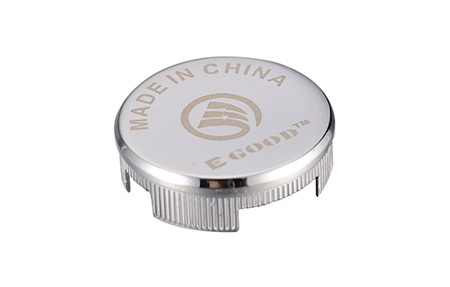What are the requirements of CNC parts processing technology?
2020-04-07What are the requirements of CNC parts processing technology?
The rotation speed, feed speed and cutting speed of the spindle of the CNC part machining center are mainly determined by the tool, and the setting amount of different tool parameters for processing the same material is also different. However, the tool will provide the parameters set at the time of purchase. For example, different imported tools provide parameters for processing different materials, such as maximum feed rate, cutting volume, and cutting speed.

Cutting speed, feed speed and cutting depth are the three elements of CNC parts machining cutting conditions, which directly lead to tool damage. As the cutting speed increases, the temperature of the cutter head will increase, resulting in mechanical, chemical, and thermal wear. If the cutting speed is increased by 20%, the tool life will be reduced by 1/2. The relationship between the feed conditions for CNC part machining and the wear on the back of the tool occurs within a very small range. However, the feed rate is high, the cutting temperature increases, and the rear wear is large. Its impact on the tool is less than the cutting speed. The influence of cutting depth on the tool is not as great as the cutting speed and feed, but when the cutting depth is small, a hardened layer will be formed on the material being cut, which will also affect the service life of the tool.
Durante la lavorazione di parti CNC, la velocità di taglio deve essere selezionata in base al materiale da lavorare, durezza, stato di taglio, tipo di materiale, velocità di avanzamento, profondità di taglio, ecc. La selezione delle condizioni di lavorazione adeguate si basa su questi fattori. L'usura regolare e stabile è la condizione ideale per ottenere la longevità. La lavorazione delle parti CNC richiede una selezione ragionevole di dispositivi. Le parti devono soddisfare pienamente le esigenze della macchina per ridurre errori di posizionamento non necessari, quindi selezionare speciali strumenti di bloccaggio dell'attrezzatura. Il percorso di lavorazione è il percorso di movimento e la direzione dell'utensile rispetto al pezzo durante la lavorazione della macchina utensile controllata da indice. Dovrebbe essere in grado di garantire la precisione di lavorazione e i requisiti di rugosità superficiale,
When CNC parts are processed for face milling, non-reground carbide end mills or end mills should be selected. In general milling, try to use two passes. The first pass is preferably rough milling with an end mill and continuous passes along the workpiece surface. End mills and end mills with carbide inserts are mainly used for machining bosses, grooves and box opening surfaces. Round knives and round knives (also known as round head knives) are commonly used for machining curved surfaces and variable bevel profiles. However, ball cutters are mainly used for semi-finishing and finishing. Before CNC parts are processed, the processing route should be determined for the waist. Shorten the processing route as much as possible to reduce machine wear.
Quanto sopra spiega i requisiti della elaborazione delle parti CNC . Spero che ti sarà utile dopo aver letto. Se desideri saperne di più sulla lavorazione delle parti CNC, non esitare a consultare il servizio clienti online o chiama la nostra hotline di assistenza (nell'angolo in alto a destra del sito Web) per la consultazione, ti forniremo con tutto il cuore un servizio di qualità!




